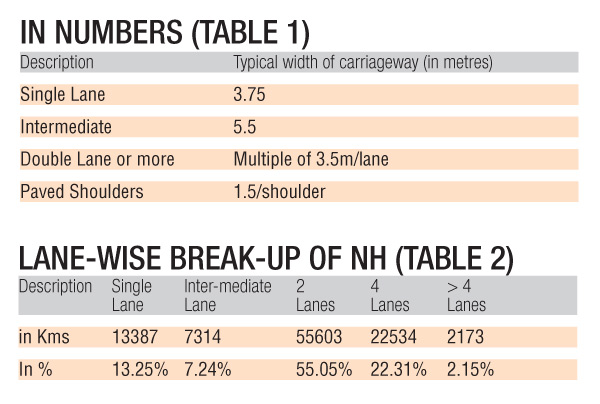
The Indian road network has National Highways (NHs), State Highways (SHs), Other PWD Roads (OPWD Roads), Rural Roads (RRs), Urban Roads and Project Roads. State Highways (SHs) are arterial roads within a state connecting state capitals, district headquarters and important towns and cities. Other PWD Roads (OPWDs) are the main roads for intra-district movements. The State/UT Government is responsible for SHs and OPWD Roads.
Rural Roads include Panchayati Raj roads under Jawahar Rozgar Yojana (JRY) and PMGSY that connect rural areas to the nearest major road. Urban Roads mean municipal roads, railway roads and project roads. One can possibly differentiate National and State Highways/Major District Roads from the others. But it is really the National Highways, State Highways and OPWD roads where the likelihood of clearly distinguishing one from the other reduces.
The National Highways Act 1956 does not specifically define the term ‘National Highways (NHs)’. The Ministry of Road Transport and Highways is responsible for development and maintenance of NHs. The government focus has primarily been on augmenting the NH infrastructure. As a result, standardisation of NHs in terms of width, presence of way-side amenities, structures, and surface material received inadequate attention. This possibly explains why we are not able to associate some kind of a ‘threshold’ driving experience across NH networks. The most obvious aspect one may notice about any highway would be its width and surface topping.

Hundred per cent of NHs are surfaced — meaning they would either have bitumen or concrete topping. This surface on which vehicles ply is technically referred to as a ‘carriageway’. A carriageway will also have shoulders on either side. The width of any highway depends on the number of lanes. Table 1 shows the typical width of a carriageway with respect to the number of lanes:
A single lane highway with paved shoulders on either side would be around 6.75 metres (m) wide. A double-lane highway would be around 10 m wide and so on. As on March 31, 2016, the NH network totalled about 1 lakh km. More than 75 per cent of this network is two-lane or less. Around 20 per cent is either single-lane or intermediate-lane. With such variations in terms of carriageway width across the network, it is really difficult to attribute a minimum threshold to NHs. Table 2 illustrates this.
In an attempt to ensure consistency in specifications and designs across the NH network, the Indian Roads Congress (IRC) has created a code referred to as ‘Manual of Specifications and Standards’. The norm for two-laning of highways with paved shoulders was published by the IRC in 2007 and later revised in 2015. Similarly, IRC published and revised manuals for four laning in 2009 and 2014 respectively.
The manual for six laning was first published in 2010 and later revised in 2013. The intent was to standardise the planning, design and other facilities — road side drainages, toll plazas (in case the highway is tolled), structures (under-bridges, flyovers and over-bridges wherever needed), way side amenities (truck lay-bys, bus bays, tariff and medical aid posts), traffic control and road safety works (signs, reflective markers) across the highway network. There is one caveat, though — the manuals are largely applicable for projects implemented through the PPP mode. And therefore, the guidelines prescribed in these manuals become part of every Concession Agreement the Government signs with private parties. The country, however, has a mix of highways developed through PPP and other non-PPP modes. It is possible that the standard manuals are not strictly applied to NH projects developed through non-PPP modes.
The National Highways Act 1956 empowers the Centre to declare any highway a National Highway. It has been doing this on the basis of various considerations such as traffic density, economic and political priorities. It may well be the case that when being declared a NH in this fashion, many such highways do not have design features similar to NHs administered by the Government of India. All these aspects have led to a situation where users are not able to associate a standard/uniform experience across National Highways.
The Government has set up the Indian Highways Management Company Ltd. (IHMCL). The NHAI holds about 42 per cent shares in IHMCL and the remaining is owned by a group of Concessionaires and Financial Institutions. One of the key mandates of IHMCL is to develop wayside amenities across NHs. This is an important initiative. However, the larger issue that still needs serious consideration is whether there should there be some minimum thresholds for a highway to be a National Highway. Possibly all NHs should have 2-lanes at least with paved shoulders. All high density NHs should be at least four-lanes with dividers. Possibly there should be select minimum passenger amenities (shelters, lay-bys and toilets) and safety related works.
The authors are economists with NITI Aayog. Views personal.